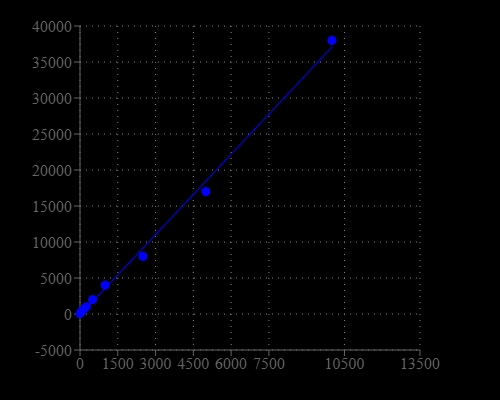Cell Meter™ Fluorimetric Cell Cytotoxicity Assay Kit
Our Cell Meter™ assay kits are a set of tools for monitoring cell viability. There are a variety of parameters that can be used for monitoring cell viability. The measurement of mitochondrial dehydrogenases (e.g. LDH) activity is a well-accepted assay to quantify cell numbers and monitor cell viability. This cell viability assay kit provides a fast, simple, accurate and homogeneous assay for the fluorometric detection of viable cells. This assay is based on the observation that blue and non-fluorescent resazurin is reduced to a pink fluorescent dye (resorufin) by accepting the electron from mitochondrial respiratory chain in live cells. The amount of resorufin produced is directly proportional to the number of living cells. The detection sensitivity of cell proliferation and cytotoxicity assays using this kit is higher than other assays such as MTT. Since the kit components are quite stable with minimal cytotoxicity, a longer incubation (such as 24 to 48 hours) is possible. The assay can be performed in a convenient 96-well and 384-well microtiter-plate format. The characteristics of its high sensitivity (<100 CHO cells), non-radioactive and no-wash method made the kit suitable for high throughput screening of cell proliferation or cytotoxicity against a variety of compounds and adaptable for a wide variety of instrument platforms. The kit provides all the essential components with an optimized assay protocol. It is suitable for proliferating and non-proliferating cells, and can be used for both suspension and adherent cells. Using 20 ul of reagents per well in a 96-well format, this kit provides sufficient reagents to perform 1000 assays. Using 10 ul of reagents per well in a 384-well format, this kit provides sufficient reagents to perform 2,000 assays.


| Catalog | Size | Price | Quantity |
|---|---|---|---|
| 22781 | 1000 Tests | Price | |
| 22782 | 5000 Tests | Price |
Spectral properties
| Absorbance (nm) | 570 |
| Extinction coefficient (cm -1 M -1) | 65000 1 |
| Excitation (nm) | 571 |
| Emission (nm) | 584 |
| Quantum yield | 0.75 1 |
Storage, safety and handling
| H-phrase | H303, H313, H333 |
| Hazard symbol | XN |
| Intended use | Research Use Only (RUO) |
| R-phrase | R20, R21, R22 |
| Storage | Freeze (< -15 °C); Minimize light exposure |
| UNSPSC | 12352200 |
Instrument settings
| Fluorescence microplate reader | |
| Excitation | 540 nm |
| Emission | 590 nm |
| Cutoff | 570 nm |
| Recommended plate | Black wall/clear bottom |
| Instrument specification(s) | Bottom read mode |
Documents
Contact us
| Telephone | |
| Fax | |
| sales@aatbio.com | |
| International | See distributors |
| Bulk request | Inquire |
| Custom size | Inquire |
| Technical Support | Contact us |
| Request quotation | Request |
| Purchase order | Send to sales@aatbio.com |
| Shipping | Standard overnight for United States, inquire for international |
Page updated on November 24, 2025

